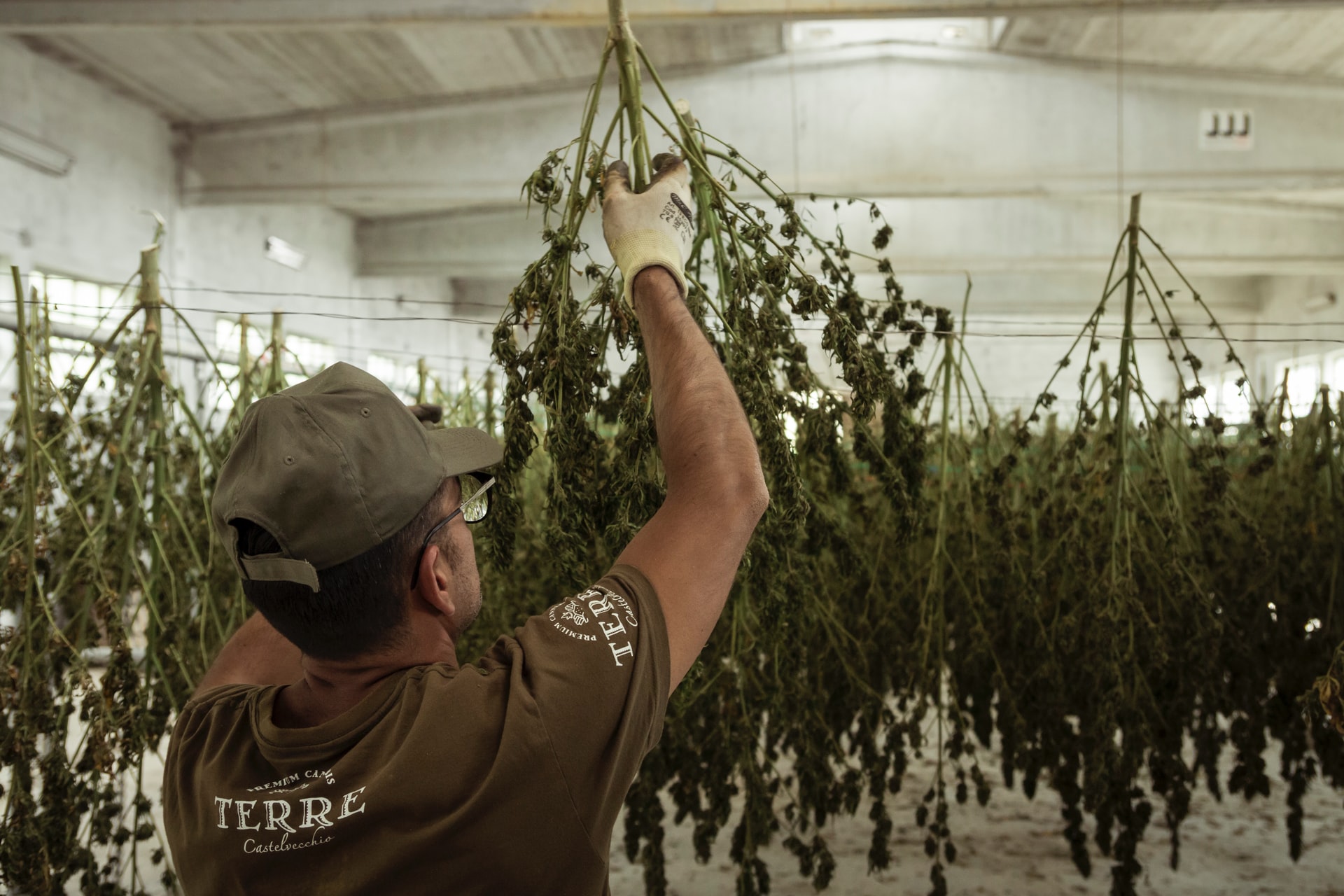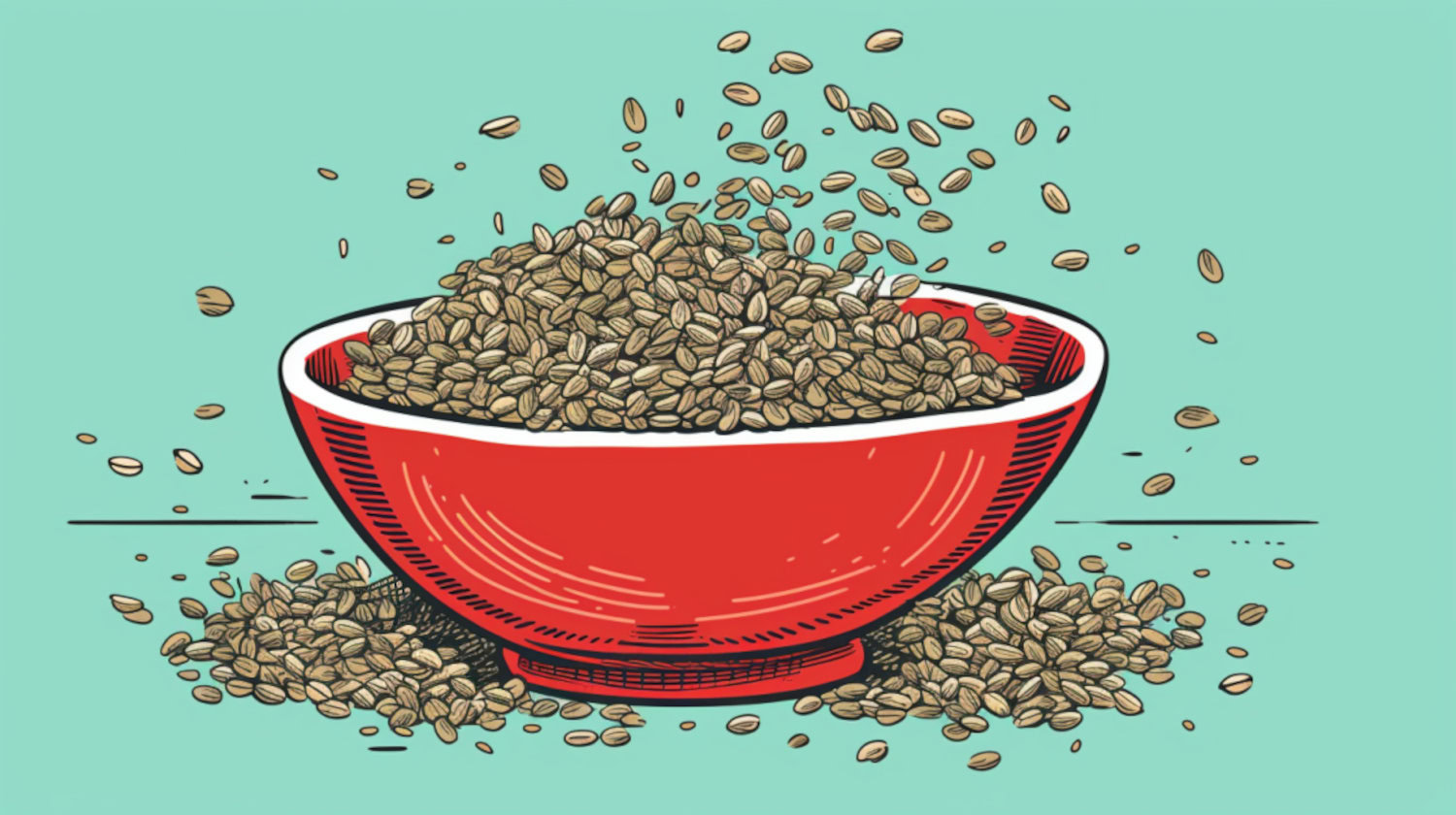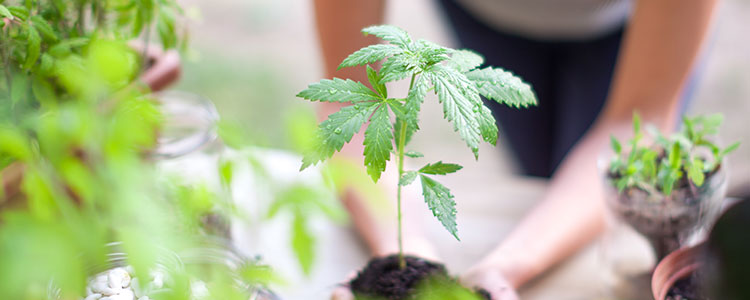A number of elements determine the experience a consumer can expect from cannabis. These include the type of strain, how it’s consumed, and the condition of the bud or flower.
Weed that is too dried out tends to lose some of its potency, not to mention its flavor and aroma. On the other hand, weed that is too damp may contain mold and be trickier to smoke.
To ensure that your stash is in its best condition, here’s how to properly dry and cure weed for the best experience.
What are the Dangers of Damp Weed?
Cannabis requires a specific moisture content in order to stay fresh, retaining the terpenes and cannabinoids in the trichomes.
If cannabis flower has too much moisture, there’s an increased risk of mold and pathogen formation. Mold and other bacteria and pathogens thrive in moist conditions, and inhaling these toxins can lead to breathing issues and has the potential to lead to pneumonia. Read more about the dangers of moldy weed.
While more inconvenience than danger, another downside of wet weed is that it is difficult to grind. A high moisture content means the flower is often damp and sticky, making it hard for a grinder to break it apart easily. Similarly, cannabis flower with high moisture content doesn’t burn evenly (if it burns at all).
What Happens When Weed is Excessively Dried?
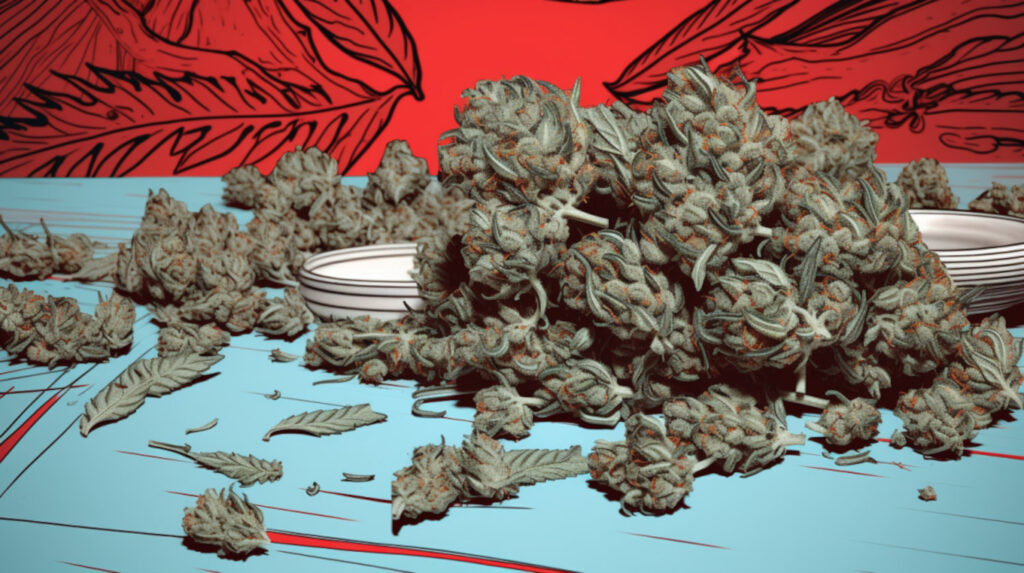
Just as cannabis can be too wet, it can also be too dried out. When cannabis becomes too dried out – typically due to exposure to light, oxygen, and heat – it results in a loss of terpenes and flavonoids due to the fragile nature of the compounds. This causes the flower to lose not only their flavor but their scent as well. In addition, exposure to oxygen, light, and heat can also lead to the degradation of cannabinoids. Unfortunately, this results in a less potent flower.
Cannabis that has become excessively dry can also result in a harsher inhale. This excessive dryness can increase throat and lung irritation, resulting in more coughing.
If you find yourself struggling to keep your cannabis flower from drying out, you can head to our article to read some tips on How to Keep Your Weed Fresh or How to Rehydrate Your Weed.
How to Properly Dry Weed
When harvested, cannabis plants are fresh and contain a lot of moisture. Thankfully, the flower available at most dispensaries has already been dried and cured.
While the cannabis flowers are still soft from the moisture, cultivators trim the sugar leaves to make the buds more visually appealing. This step also helps speed up the drying process, which can take anywhere from a few days to three weeks, depending on the environment.
While every grower’s process is unique (and the crop's weight, moisture content, and bud size), there are a few basic steps most plant parents should follow, whether you’re part of a large cultivator or growing your own plants at home.
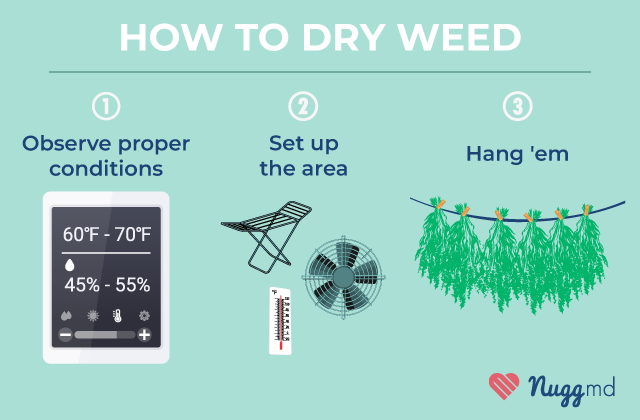
1. Prepare a drying area
- Your drying area should be enclosed and well-ventilated and kept between 60℉ and 70℉ and 45% to 55% humidity. (Some recommendations say between 60℉ and 65℉ and 50% to 60% humidity.)
- If the area has been used for harvests or grows before, be sure to clean it with a disinfecting solution to prevent pathogen growth.
- Drying outdoors can be done but is not advised due to the inability to control the temperature and humidity.
2. Set up the space
- Set up a fan to keep the air circulating as stagnant air can increase the risk of mold and pathogen growth.
- Get a thermometer and a hydrometer so you can monitor the temperature and humidity level during the drying process.
- Place an air conditioning unit in the enclosed space to keep the temperature between 60℉ and 70℉.
- A dehumidifier may also be necessary to keep the humidity within the ideal range for drying cannabis flower.
- Lastly, you’ll need to create a hanging line using heavy-duty rope, a wooden pole, or a metal hanger. Alternatively, a wire or mesh drying rack may also be used.
3. How to hang buds
- You should remove the large fan and sugar leaves before drying the flower to allow for more airflow and faster drying.
- Cannabis buds are typically hung using a setup similar to a clothesline. Plants can be hung as a whole plant or separated by branches to allow for more airflow throughout the buds.
- You can also use drying racks, which require the buds to be laid out and periodically rotated to retain their shape.
Ideally, cannabis flowers should have between 8% and 11% inner moisture content. When your cannabis flower retains the perfect moisture content, it helps preserve the fragile terpenes within the trichomes on the flower. Cannabis flower with the proper moisture content will have a better smell and taste and shouldn’t be harsh when inhaling.
How to Properly Cure Weed
During the cannabis drying process, starches in the plant are converted into “reducing sugars” that further degrade into carbon dioxide and water. Chlorophyll, the compound that gives the plant its green colors, also degrades alongside the starches during drying.
After hanging up to dry, cannabis flowers are "cured" to remove unwanted chlorophylls and built-up salts. Curing dries up the cannabis flowers further, allowing them to be stored for longer without the risk of growing mold.
Curing cannabis is an important step for flavor and aroma, like aging wine or whiskey. Similar to the drying process, growers often have specific methods they have perfected over the years for their cultivation style.
In general, your bud is ready to start the curing process when the stem at the base of the bud easily snaps when bent and feels dry yet spongy.
Here are some of the basics when it comes to how to cure weed.
Glass is the ideal container for curing cannabis, as it leaves no aroma on the flower. Plastic bins and stainless steel containers can be used, but they may leave the cannabis flower with a plastic or metallic aroma or taste. You can also use paper bags for smaller amounts of flower.
While your cannabis is curing, you should store the containers in a dark room with a temperature between 60℉ to 65℉ and a humidity level between 50% and 60%.
To maintain the proper humidity levels within each container, they must be “burped” throughout the process. Essentially, “burping” allows the cannabis to air out by releasing the gasses produced by the humidity. When the moist air escapes the container during “burping,” it is replaced by the less humid air in the room. Depending on the strain of cannabis, it is recommended to burp the jar 1 to 3 times per day for the first week of curing, 2 to 3 times per week in the second week, and once per week in the remaining weeks of curing.
You can also use Boveda packs or other cannabis humidity packs during the curing process to help maintain proper humidity levels. Boveda states that their humidity packs are intended to maintain the appropriate humidity levels, so burping isn’t necessary, as the packs will absorb the excess moisture. These humidity packs should also always be added to stored cannabis buds to help prevent terpene and cannabinoid degradation.
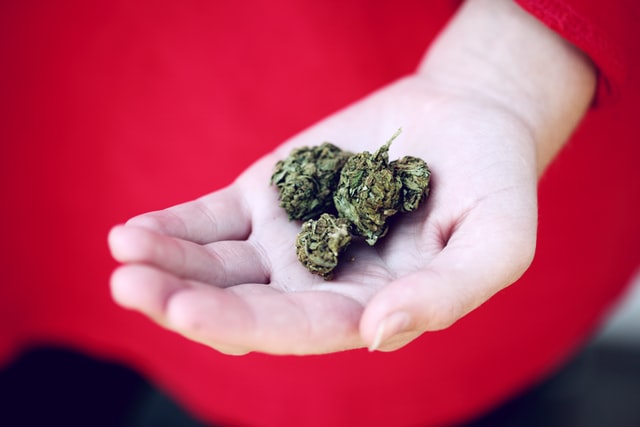
When the buds have been properly cured, they will have a prominent aroma, and the flower should feel dry to the touch but act like a sponge when squeezed, retaining its form. If you see any condensation build-up or find that after the first burping, the flower smells a bit musty, remove the buds from their container and lay them out to dry for another 12 to 24 hours before returning them to the container.
Depending on the variety of flower and the curing environment, it can take anywhere from one week to two months to properly cure a cannabis strain. Some growers prefer even longer, potentially curing their flower for up to six months.
The moisture content of adequately dried and cured buds should be between 8% and 11%. Devices such as hygrometers may be used, but they require some practice as they are not made to measure moisture in cannabis flowers.
To learn more about how to store your dried and cured cannabis properly, check out our guide to The Best Way To Store Cannabis Long-term Without The Smell.
The information in this article and any included images or charts are for educational purposes only. This information is neither a substitute for, nor does it replace, professional legal advice or medical advice, diagnosis, or treatment. If you have any concerns or questions about laws, regulations, or your health, you should always consult with an attorney, physician or other licensed professional.

